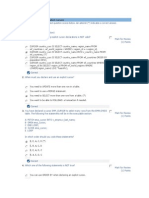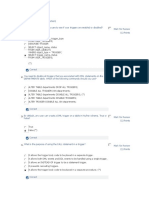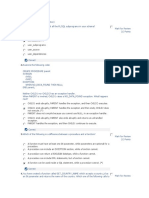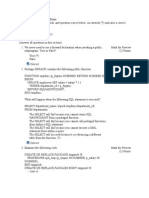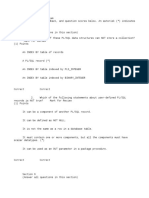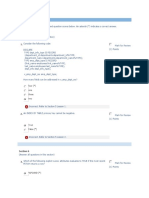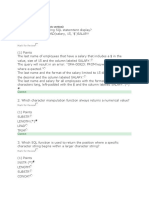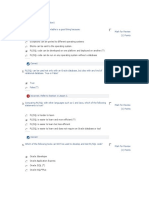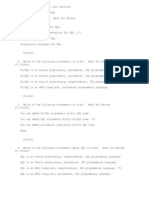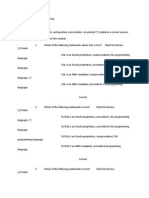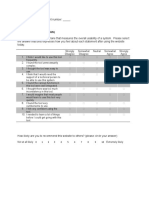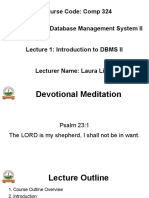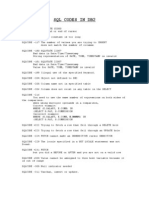100% found this document useful (2 votes)
2K views15 pagesSemester 1 Midterm Exam PLSQL
This document provides a summary of a student's semester 1 midterm exam in PL/SQL. It includes 15 multiple choice questions across two sections, showing the student's answers and feedback. The student answered most questions correctly, with feedback provided for incorrect answers.
Uploaded by
Ovie WidiyastutiCopyright
© © All Rights Reserved
We take content rights seriously. If you suspect this is your content, claim it here.
Available Formats
Download as PDF, TXT or read online on Scribd
100% found this document useful (2 votes)
2K views15 pagesSemester 1 Midterm Exam PLSQL
This document provides a summary of a student's semester 1 midterm exam in PL/SQL. It includes 15 multiple choice questions across two sections, showing the student's answers and feedback. The student answered most questions correctly, with feedback provided for incorrect answers.
Uploaded by
Ovie WidiyastutiCopyright
© © All Rights Reserved
We take content rights seriously. If you suspect this is your content, claim it here.
Available Formats
Download as PDF, TXT or read online on Scribd
/ 15



